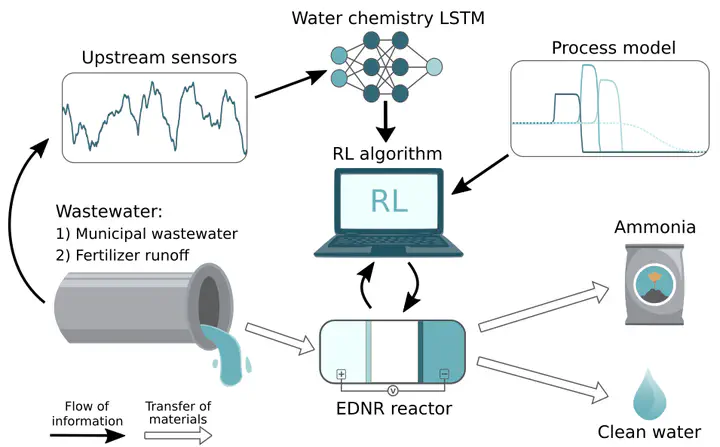Reimagining the nitrogen cycle
 Process diagram for optimizing an electrodialysis and nitrate reduction (EDNR) system.
Process diagram for optimizing an electrodialysis and nitrate reduction (EDNR) system.
Nitrogen is one of the most ubiquitous, costly and challenging environmental pollutants of the 21st century. In addition to clean water issues, the 21st century will require more efficient fertilizer production to meet the needs of a growing population. As part of an interdisciplinary research team, we aim to tackle these two challenges by converting waterborne nitrogen pollutants into high-purity fertilizer.
Collaborators in the Dept. of Chemical Engineering have developed a new methodology for exactly this purpose: electrodialysis and nitrate reduction (EDNR). The next step is to build and optimize a device that in a real-world setting. In collaboration with our industry partners (the New York City Dept. of Environmental Protection, San Francisco Water Power Sewer, Jasper Ridge Biological Preserve, and others), we aim to deploy EDNR systems in both urban and rural settings.